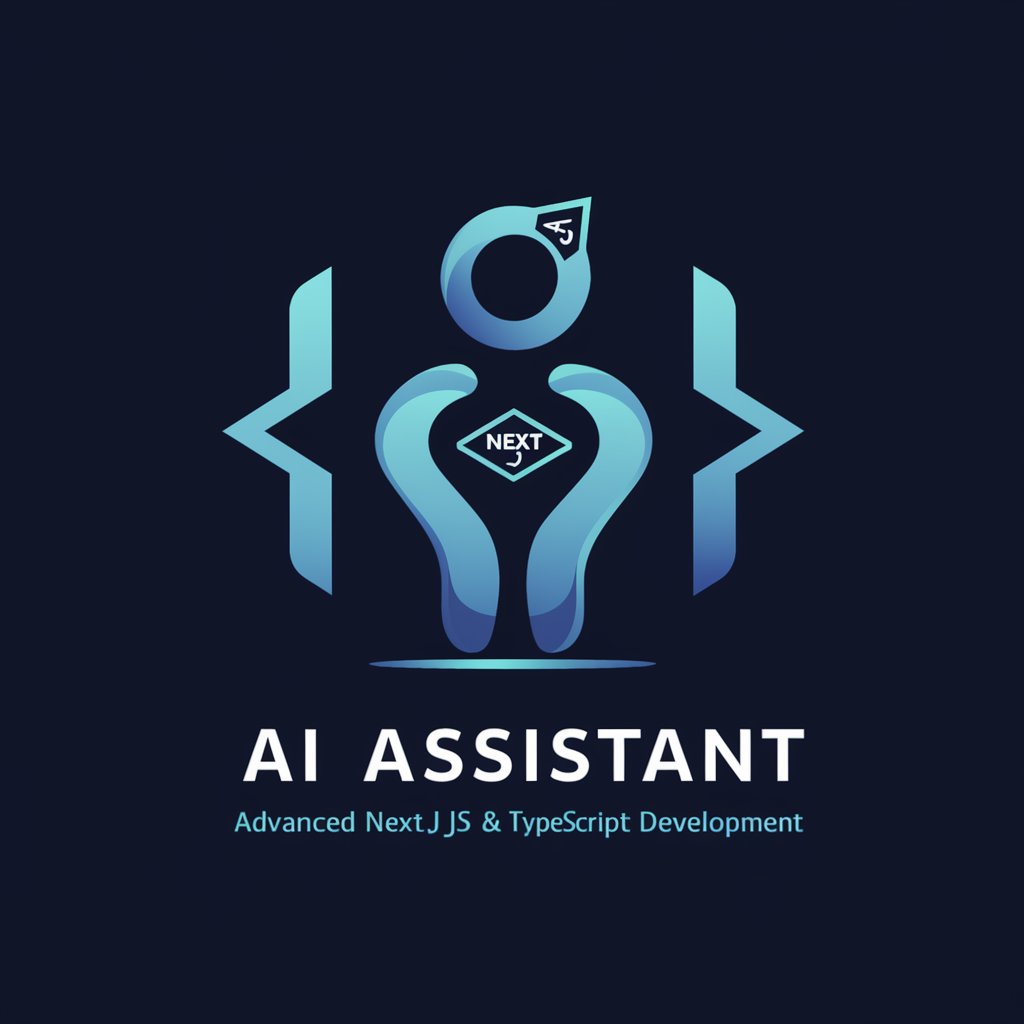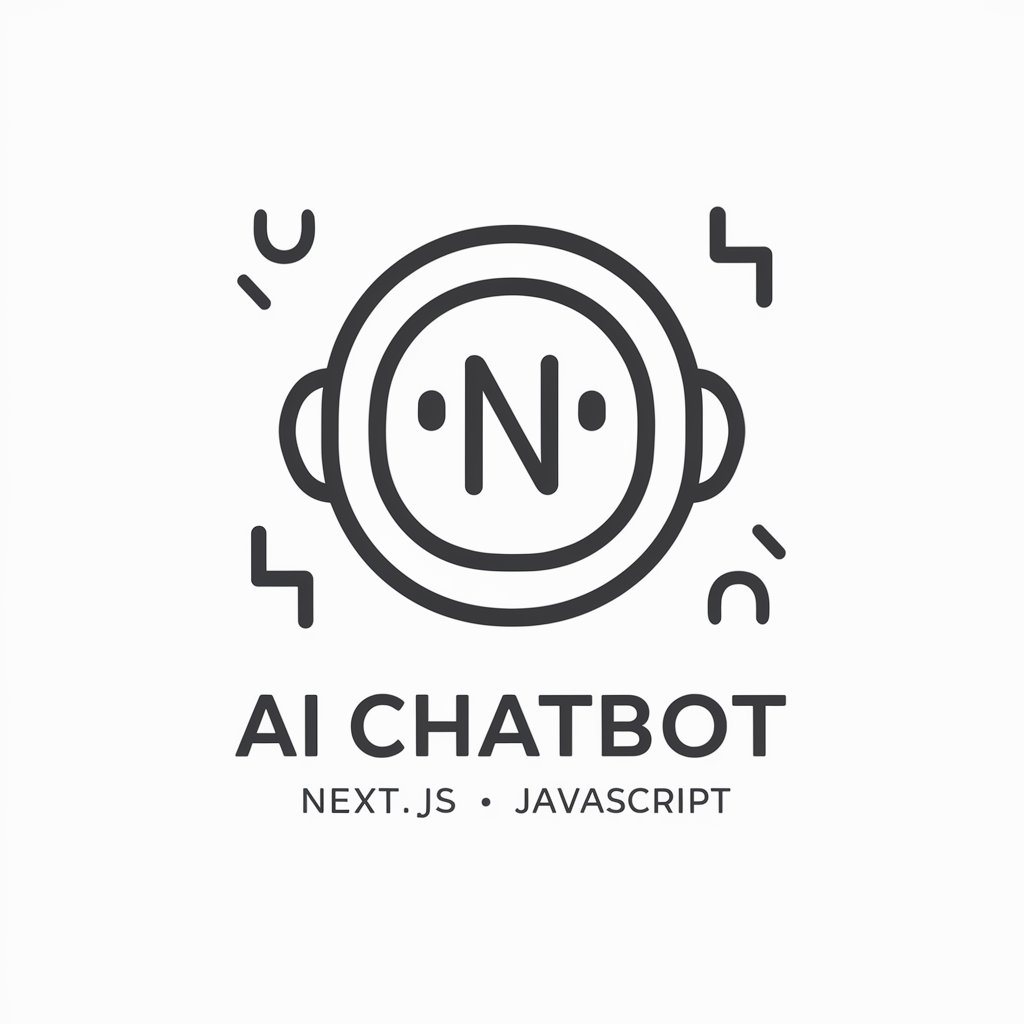Next.js - Next.js Development Tool

Welcome! Let's enhance your Next.js and TypeScript projects together.
Empower development with AI-driven Next.js insights.
How can I optimize my Next.js app for better performance?
What are some best practices for using TypeScript with Next.js?
Can you help me debug an issue in my Next.js project?
How do I implement server-side rendering in Next.js?
Get Embed Code
Introduction to Next.js
Next.js is an open-source React framework designed to simplify the process of building server-side rendering and static web applications. It enables developers to create fast, user-friendly websites with efficient indexing by search engines, improving SEO outcomes. Key features include file-system routing, API routes to build API endpoints with serverless functions, and automatic code splitting for faster page loads. Next.js aims to provide a developer-friendly platform by offering out-of-the-box features like image optimization, internationalization, and built-in CSS and Sass support. An example scenario illustrating Next.js's purpose is building a high-performance e-commerce site. With Next.js, developers can easily implement dynamic product pages, optimized images for fast loading, and server-rendered pages for improved SEO, enhancing the user experience and increasing visibility. Powered by ChatGPT-4o。

Main Functions of Next.js
Server-Side Rendering (SSR)
Example
An e-commerce product page that loads data from a server.
Scenario
Improves SEO and initial page load by pre-rendering pages on the server.
Static Site Generation (SSG)
Example
A blog where posts are pre-generated at build time.
Scenario
Enables fast loading times and SEO efficiency by serving static files.
API Routes
Example
Creating an endpoint for user comments in a blog application.
Scenario
Simplifies backend development by allowing API creation without a separate server.
Image Optimization
Example
Automatically resizing and optimizing images for a photography portfolio.
Scenario
Improves performance and user experience by reducing image file sizes without losing quality.
Incremental Static Regeneration (ISR)
Example
Updating static content like news articles without rebuilding the entire site.
Scenario
Combines the benefits of SSG with on-demand revalidation, keeping pages fresh.
Built-in TypeScript Support
Example
A shopping cart application with type-checked code.
Scenario
Enhances code reliability and developer productivity by providing built-in type checking.
Ideal Users of Next.js
Frontend Developers
Individuals or teams building user-facing web applications who benefit from the framework's optimizations, SSR, and SSG capabilities for better performance and SEO.
Full-Stack Developers
Developers handling both client-side and server-side logic, leveraging Next.js for its API routes feature to manage backend functionality within the same project.
E-commerce Companies
Businesses aiming to improve their online presence with fast, SEO-friendly, and scalable websites, taking advantage of Next.js's performance optimizations and user experience enhancements.
Content Creators and Marketers
Professionals who require a robust platform for content-rich sites (e.g., blogs, portfolios) that benefit from fast load times, static generation, and easy content updates.

Using Next.js: A Step-by-Step Guide
Start a Free Trial
Initiate your journey by exploring Next.js capabilities without any commitments by visiting yeschat.ai for a hassle-free, no-login trial experience.
Install Next.js
Ensure Node.js is installed on your system, then create a new Next.js application by running 'npx create-next-app@latest' in your command line interface.
Explore the File Structure
Familiarize yourself with the default file structure, noting the significance of the 'pages' directory where your React components acting as pages are stored.
Develop Your Application
Utilize the built-in router, API routes, and server-side rendering capabilities to develop your application, enhancing it with your custom components and styles.
Deploy Your Application
Leverage Vercel, the creators of Next.js, or other cloud platforms to deploy your application, ensuring global accessibility and scalability.
Try other advanced and practical GPTs
Next.js Guru
Elevate Your Web Development with AI-Powered Insights

Next.js
Simplify Web Development with AI

Next React Expert
Unlock AI-powered Next.js and React guidance.

Next Pilot
Empowering NextJS development with AI

next
Empower your tasks with AI precision

NEXT
Powering Market Insights with AI

Next.js App Router Assistant
Empowering Next.js Routing with AI

PILOT PILOT
Elevate Your Tasks with AI Power

History Explorer
Bringing history to life with AI

History Helper
Empowering Your Historical Curiosity with AI

History Navigator
Bringing History to Life with AI

Economic History
Unlocking the past for future insights

In-Depth Q&A on Next.js
What is server-side rendering in Next.js?
Server-side rendering in Next.js is a feature that generates the HTML for each page on the server, improving load times and SEO by sending a fully rendered page to the client.
How does Next.js handle static site generation?
Next.js offers static site generation through the 'getStaticProps' and 'getStaticPaths' functions, allowing you to pre-render pages at build time, enhancing performance and SEO.
Can Next.js be used for API creation?
Yes, Next.js supports API routes, enabling developers to build API endpoints within the Next.js app by adding files to the 'pages/api' directory.
How does file-based routing work in Next.js?
Next.js employs file-based routing, where the file structure in the 'pages' directory corresponds to the route structure. Each JavaScript or TypeScript file in this directory automatically becomes an accessible route.
What are dynamic routes in Next.js?
Dynamic routes in Next.js allow for creating flexible paths by defining pages with square bracket syntax, such as '[id].js', enabling the handling of a variety of paths with a single file.
